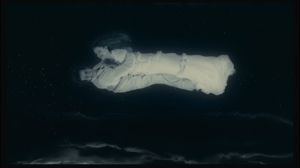You must tell me your secret. Echinacea? Gene supplements? Cryogenic freezing? It's not that I find it amazing that you've lived to the ripe old age 103; no, Chinese peasants and Indian yogis do it all the time. What I find amazing is that you've maintained your artistic faculties to this late stage, and - perhaps more amazingly - are using them to pose questions about the very act of filmmaking that, after more than eight decades behind the camera, you're still engaged in.
There's a distinct timelessness to your 2010 film The Strange Case of Angelica. And I suspect it's more than just the usual encroachment of Europe's hefty cultural history. It's impossible to tell, in the opening few scenes, what year the film takes places in. Only later, as we follow a sleek modern sedan cruising through the streets of a contemporary Portuguese city, is it clear we are rooted in the present.
But only sort of. Right, Manny?
Anachronisms reign throughout; Isaac - a Jewish photographer who is summoned to the estate of a wealthy family to take a portrait of their recently deceased daughter - uses a 60s-era Leica, and his studio is decidedly analog: a lot of plastic bins filled with chemicals, developing proofs clothes-pinned to hanging wires. Ancient funerary customs are observed, yet references are made to the current European economic crisis and the study of antimatter.
And still, this film feels a half-century old. At least.
Why? The camera is heavy, rooted to the ground. With very few exceptions, it never tilts; never pans; never tracks. You've cut this story together from a series of carefully composed static shots. This aesthetic is reflected tonally. Your dialogue is straightforward; your plotting is linear. Some elements suffer this approach (Isaac's relationship with his wisecracking lady landlord feels like something from a bad sitcom). Others, however, are buoyed by it. In the middle act, you conjure a strange dream sequence that might seem absurd except for how perfectly it represents the ideas at the heart of your film: the tension between new and old.
Funny how one might watch this and, not knowing the filmmaker is a centenarian, accuse the auteur of not knowing enough about film theory. But it's the opposite of that, isn't it? It's not a lack that we see onscreen; rather a stripping-down to the essentials. In fact, one of Isaac's fellow lodgers uses an apt filmic metaphor in that discussion about the duality of matter and antimatter: "No big special effects, like on a Hollywood movie."
I guess, then, your advice about defying the laws of aging is right there in the film: the old is the fundament upon which everything new is built.
When Isaac gazes out of his window, one afternoon, and spies a group of laborers working in the vineyards on the other side of the river, his landlady asks him why he's so interested in watching them "work the old-fashioned way."
Isaac tells her: "Old-fashioned work interests me."
She counterpoints: "They're the only ones who do it the old way. Now we use machines."
Yes, everyone else is obsessed with the machinery, but you, Manoel-- you're doing it the old way. Bravo!
Com Carinho,
Jared






